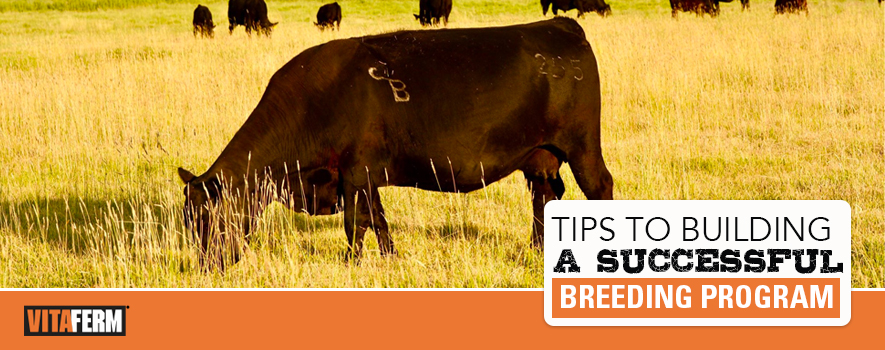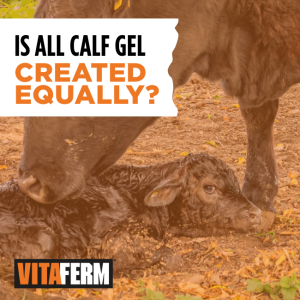Cow-calf producers have a checklist of endless options in order to be successful. They can choose the breed or breeds they want to incorporate into their herds. They can choose a time of year to calve based on their marketing strategy and demand. They can choose from a multitude of health and nutrition protocols. And they can choose from several breeding programs to make their operation successful.
However, before they make too many choices, the one thing cow-calf producers should do is have a goal in mind. Perhaps Walt Disney said it best, “A person should set his goals as early as he can and devote all his energy and talent to getting there.” Third-generation Angus producer Britney Creamer from Lazy JB Angus in Montrose, Colo., agrees and reminds readers that all livestock operations are businesses that need a plan to thrive and survive.
“When you start, figure out what your overall goals are because that will make a difference in your breeding decisions,” she challenges. “If you are looking to raise commercial calves, are you selling at weaning time or selling your calves as yearlings? From the seedstock side, are you trying to sell bulls? Are you going to sell show heifers? If you start with your goals in mind, that can help establish which direction you need to go with your bull and mating selections.”
Producers have the options of natural bull service or the use of advanced reproductive technologies like artificial insemination (A.I.) and embryo transfer (E.T.). Some livestock operations use a combination, while others use one exclusively. Whichever method you choose will ultimately reflect the goals of your operation, and the final outcome as you reach your goals.
Lazy JB Angus is a seedstock operation that works to produce bulls that will benefit the commercial cattleman while still raising cattle that will work in the show ring, so they spend time evaluating bulls and potential sires for multiple traits.
“There are a lot of different bulls for a lot of different uses. We have those bulls that are more targeted toward the show ring. We have those that are targeted more for carcass or more EPD-oriented. For our particular operation, we’re trying to do it all,” Creamer said.
Natural Service Saves Labor
The primary advantage of using a bull or multiple bulls to breed your cows is the decreased labor it requires. After making sure your bulls are reproductively sound, the bull or bulls are turned out with the cows for a pre-determined amount of time, depending on the length of calving window the producer desires. It is recommended to leave the bulls out for at least 42-63 days to cover two to three cycles.
“Obviously having bulls right out there on your cows, you’re guaranteeing that your cows are getting covered. You’re not continually having to set them up or watch them to see if they are cycling, so from a labor standpoint using all-natural service is a good way to go. Of course, you can buy a good bull for $5,000 and cover a lot of cows. With semen, you’re paying per straw, and you have added labor costs when using A.I.” Creamer said.
She also reminds producers that when buying bulls to do their homework on genetics and traits that will help them meet their goals and fit their current scenario. For instance, if they are breeding first-calf heifers, calving ease should be considered, as well as the phenotypic design of the bull. Is he a smooth-shouldered, bull that is well-balanced or does he have a big head and rough shoulders with the potential to create calving difficulty? Also, don’t skimp when it comes to buying a bull for your herd.
“Seek out the best possible genetics you can from seedstock producers to purchase bulls. I wouldn’t go to the sale barn and purchase just any bull,” Creamer said.
Advanced Technologies Expand Opportunities
Technologies like A.I., E.T. and in vitro fertilization (IVF) allow a producer the chance to improve genetics within the herd by introducing a wider array of genetics. The technologies also allow a producer to synchronize a group of cows to breed within a certain time period, which ultimately cuts labor costs on the calving end of production and allows the producer to market a more uniform set of calves.
Since multiple sires have their semen on the market, producers can search for nearly any parameter of any trait to help meet their goals. And, instead of just using one or two bulls to breed a group of cows, the breeder could use a different sire for each cow, if he or she desired.
“A.I. allows you to bring a lot of different and new bloodlines in, rather than if you ran just four or five bulls. With A.I., we’re able to bring in 10, 15, 20 different sire groups. So, from an A.I. perspective, it gives you more sire potential and more marketing potential. If you are retaining interest in them, then you can trace those all the way to the rail. Then you can collect that data to find which ones work best for you to see which ones you want to continue to use in the future,” Creamer said.
Don’t Cut Corners
Regardless if you choose all-natural mating, A.I. or A.I. followed with a clean-up bull, after you set goals, Creamer recommends making sure you have done your research and then make wise decisions regarding the management practices.
“Don’t cut corners. This includes cows you buy and bull buying decisions, but it also includes nutrition and vaccination programs. If you cut corners, at the end of the day when you go to sell calves, you’re not going to have any more calves born in the same time frame, you may have open cows or your calves might not be healthy, so having a goal and not cutting corners is huge. This is not an industry for the weak of heart. You need to be very driven and focused,”
One of the ways that Lazy JB Angus makes sure their cow herd is in top reproductive shape is using the VitaFerm® Concept•Aid® mineral. VitaFerm Concept•Aid is a vitamin and mineral supplement for beef cattle specifically designed for reproductive success when fed 60 days pre-calving through 60 days post-breeding. The mineral contains high levels of Vitamin E for reproductive tract repair, organic trace minerals for more stability and higher bioavailability and Amaferm®, is a prebiotic designed to enhance digestibility by amplifying the nutrient supply for maximum performance. It is research-proven to increase intake, digestion and absorption.
“Make a solid, wise, sensible, well-thought out investment, it should pay off in the end,” Creamer encourages.
When it comes to your cow herd management checklist, make sure you have goals in mind, work hard to make your goals come to fruition, and don’t cut corners along the way. There are always options to producers; make sure to weigh the benefits of each option and measure the potential outcome.



